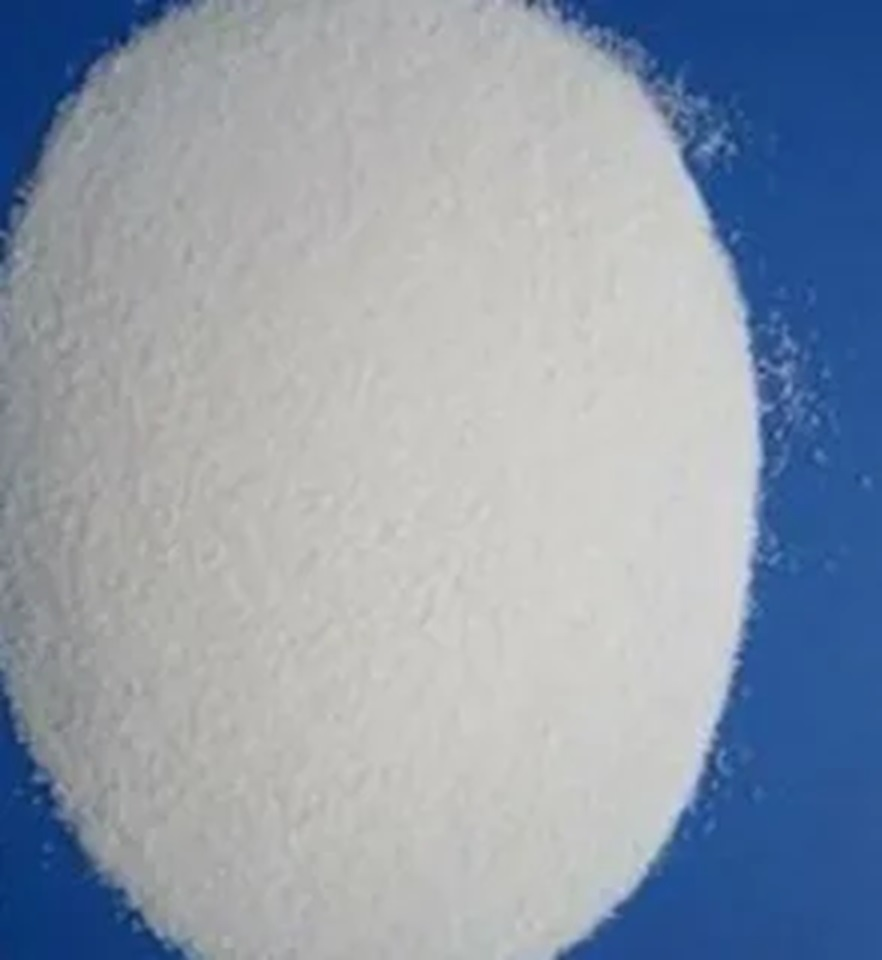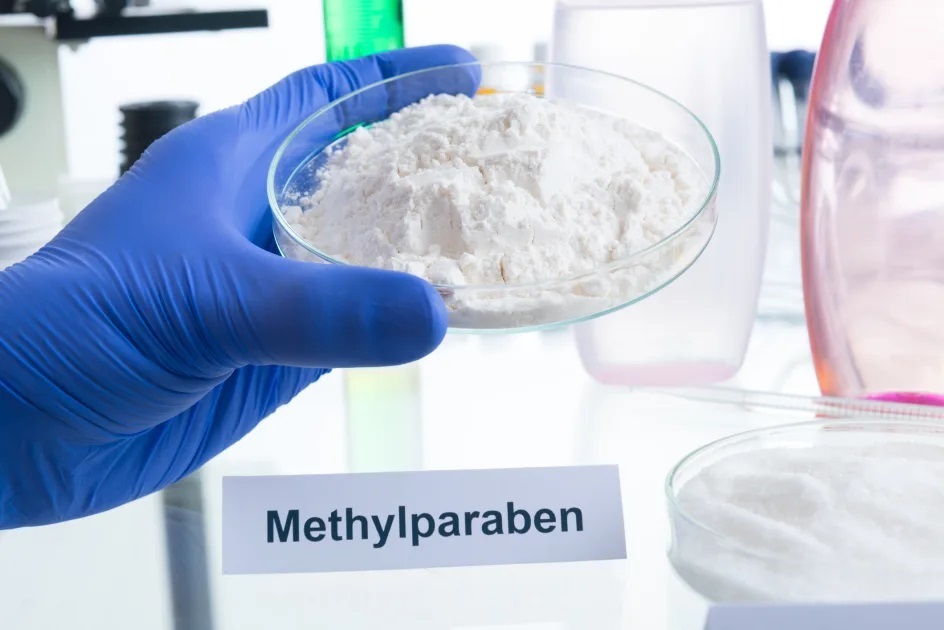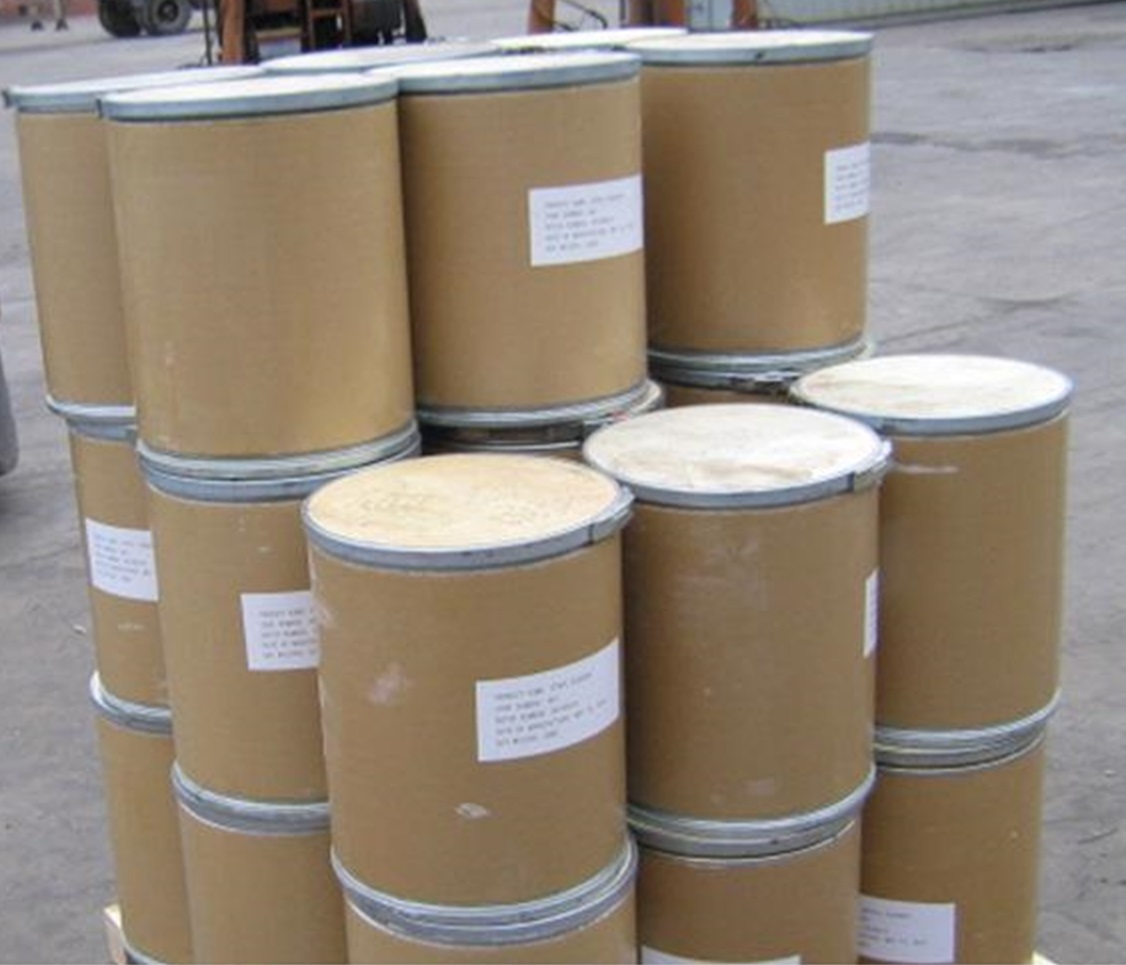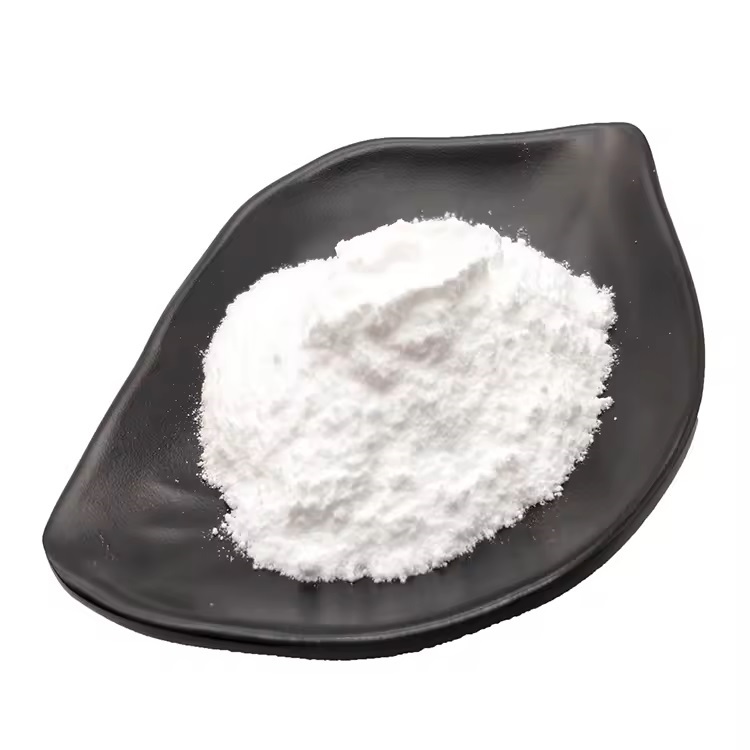We unleash your business potential by maximize the business innovation.
Send EmailE214, Ethylparaben, Ethyl 4-hydroxybenzoate, nipazina, Nipagin A, Nipazin A, nipaginaa Solbrol A, Ethylparaben, Ethyl paraben, Ethyl Parasept, 120-47-8
CAS: 120-47-8
Molecular Formula: C9H10O3
Names and Identifiers
| Name | Ethyl 4-hydroxybenzoate |
| Synonyms | nipazina Nipagin A Nipazin A nipaginaa Solbrol A Ethylparaben Ethyl paraben Ethyl Parasept p-Carbethoxyphenol 4-Carbethoxyphenol Ethyl 4-hydroxybenzoate Ethyl P-Hydroxybenzoate p-Hydroxy Ethyl Benzoate p-Hydroxybenzoic ethyl ester p-hydroxy-benzoicaciethylester 4-Hydroxybenzoic acid ethyl ester Para-hydroxybenzoic acid ethyl ester |
| CAS | 120-47-8 |
| EINECS | 204-399-4 |
| InChI | InChI:1S/C9H10O3/c1-2-12-9(11)7-3-5-8(10)6-4-7/h3-6,10H,2H2,1H3 |
Physico-chemical Properties
| Molecular Formula | C9H10O3 |
| Molar Mass | 166.17 |
| Density | 1.1708 (rough estimate) |
| Melting Point | 114-117 °C (lit.) |
| Boling Point | 297-298 °C (lit.) |
| Flash Point | 297-298°C |
| Water Solubility | Slightly soluble in water. |
| Solubility | Easily soluble in ethanol, ether and acetone, slightly soluble in water, chloroform, carbon disulfide and petroleum ether. |
| Vapor Presure | 0.00012 hPa (25 °C) |
| Appearance | White crystal or crystalline powder |
| Color | White |
| Merck | 14,3837 |
| BRN | 1101972 |
| pKa | 8.31±0.13(Predicted) |
| PH | 4.5-5.5 (H2O, 20°C) (saturated solution) |
| Storage Condition | 2-8°C |
| Stability | Stable. Combustible. Incompatible with strong oxidizing agents, strong bases. |
| Sensitive | Sensitive to light |
| Refractive Index | 1.5286 (estimate) |
| MDL | MFCD00002353 |
| Physical and Chemical Properties | White crystalline or crystalline powder with special flavor. melting point 115~118 ℃ boiling point 297~298 ℃ soluble in ethanol, ether and acetone, slightly soluble in water, chloroform, carbon disulfide and petroleum ether |
| Use | Used as a food preservative, also used in pharmaceutical, leather and other industries; The antibacterial effect on fungi is strong, but the antibacterial effect on bacteria is weak. Used as a bacteriostatic preservative, widely used in liquid preparations and semi-solid preparations, can also be used for food and cosmetics antiseptic. |
Risk and Safety
| Hazard Symbols | Xi - Irritant |
| Risk Codes | 36/37/38 - Irritating to eyes, respiratory system and skin. |
| Safety Description | S26 - In case of contact with eyes, rinse immediately with plenty of water and seek medical advice. S36 - Wear suitable protective clothing. S24/25 - Avoid contact with skin and eyes. |
| WGK Germany | 1 |
| RTECS | DH2190000 |
| TSCA | Yes |
| HS Code | 29182930 |
| Toxicity | LD50 orally in Rabbit: > 2000 mg/kg |
Upstream Downstream Industry
| Raw Materials | 4-Hydroxybenzoic acid 4-Hydroxybenzoic acid Sulfuric acid Sulfuric acid Ethyl Alcohol |
Nature
colorless crystal or white crystalline powder, with slight fragrance and slight astringency. Soluble in water, solubility of 0. 070%(20 ℃), 0.075% (25 ℃). It is stable to light and heat, and has no hygroscopicity.
Preparation Method
p-Hydroxybenzoic acid can be purified by esterification with ethanol.
Standard
This product is ethyl 4-hydroxybenzoate, from ethanol and parabens. The content of C9H1003 shall be between 98.0% and 102.0% based on the dry product.
Trait
- This product is a white crystalline powder.
- This product is soluble in methanol, ethanol or ether, slightly soluble in glycerol, almost insoluble in water.
melting point
The melting point of this product (General rule 0612) is 115 ~ 118C.
Use
p-hydroxybenzoate is one of the commonly used preservatives. It can inhibit the activity of the respiratory enzyme system and the transmission enzyme system of microbial cells, and destroy the cell membrane mechanism of microorganisms, which has a wide range of antibacterial effects on mold, yeast and bacteria. Its antibacterial ability is stronger than sorbic acid and benzoic acid, and the antibacterial effect is not affected by pH value, and the effect is good in the range of pH value 4~8. China's provisions for the filling of cakes, the maximum amount of 0. 5g/kg (based on p-Hydroxybenzoic acid, the same below); In the juice (leaf) beverage, Jam (not including canned), soy sauce, the largest amount of 0. 25g/kg; In carbonated beverages, the largest amount of egg yolk filling 0. 2 // kg, the largest amount in vinegar 0.lg/ kg; In the preservation of fruits and vegetables in the largest amount of 0.012 g/kg.
Differential diagnosis
- in the chromatogram recorded under the content determination item, the retention time of the main peak of the test solution should be consistent with the retention time of the main peak of the reference solution.
- This product is dissolved and diluted with ethanol to make a solution containing about 5mg per lm l, which is determined by UV-Vis spectrophotometry (General rule 0401), there is an absorption maximum at a wavelength of 259mn.
- The infrared absorption spectrum of this product should be consistent with the control spectrum (Spectrum set 850).
Safety
- This product is a highly bactericidal substance with a phenol coefficient of 8. 0. Very low toxicity, no irritation to human skin.
- the iron drum is packed with plastic bags. There are no special requirements for storage and transportation.
Exam
take 2ml of the solution under the items of clarity and color, add 2m l of ethanol and 5 m l of water, shake well, add 2 drops of bromocresol green indicator solution, with sodium hydroxide titration solution (O .lm o l/L) titration to blue, consumption of sodium hydroxide titration solution (0. lm o l/L) should not pass 0. lm l.
clarity and color of solution
take this product l.O g, after dissolving with 0901 of ethanol, check according to law (General rule 0902 and general rule). The solution should be clear and colorless, it shall not be deeper than the yellow or yellow-green standard colorimetric solution No. 1 (General rule 0901 method 1).
Related substances
take this product, add the mobile phase to dissolve and dilute the solution containing lm g per lm l as the test solution; Take lm l with precision and put it in a 100ml measuring flask, the mobile phase was diluted to the scale, and the solution was used as a control solution. According to the chromatographic conditions under the content determination item, take the control solution 20/il, inject the human liquid chromatograph, adjust the detection sensitivity, so that the peak height of the main component peak is about 25% of the full range, then 20 ^ 1 of the test solution and the control solution were accurately measured, and the human liquid chromatograph was injected respectively, and the chromatogram was recorded to 4 times of the retention time of the main peak. If the impurity peak in the chromatogram of the test solution,. Individual impurity peak area shall not be greater than 0 of the main peak area of the control solution. 4 times (0 .4% ) , the sum of each impurity peak area shall not be greater than 0. 8 times (0. 8%).
chloride
take 2.0g of this product, add 50ml of water, 8CTC water bath heating for 5 minutes, cold, filtered; Take the filtrate 5. 0ml, check according to law (General rule 0801), and standard sodium chloride solution 7. Compared with the control solution made of 0M l, it should not be more concentrated (0.035%).
sulfate
take 25ml of filtrate under chloride item, check according to law (General Rule 0 8 0 2 ) , and standard potassium sulfate solution 2. Compared with the control solution prepared by 4m, it should not be deeper (0.024%).
loss on drying
take this product; Put it in a silica gel dryer, and dry it under reduced pressure to constant weight. The weight loss shall not exceed 0831 (general rule).
ignition residue
take 1.og of this product and check it according to law (General rule 0841>, the residue shall not exceed.
Heavy metals
The residue left under the ignition residue item shall not contain more than 20 parts per million of heavy metals as determined by law (general chapter 0821 second method).
arsenic salt
take this product l. O g, add calcium hydroxide l. O g, mix, add a small amount of water, stir evenly, after drying, first burn with small fire to charring, then burn at 500~600°C to completely Ash and cool, add hydrochloric acid 5M l and water 23ML, according to the law inspection (General Principles 0822 The first law), should comply with the provisions (0.0002%).
Content determination
measured by high performance liquid chromatography (General 0512).
- chromatographic conditions and system applicability test using eighteen alkyl silane bonded silica gel as filler; Methanol -1% glacial acetic acid (60 : 40) as mobile phase, the detection wavelength was 254mn. Take appropriate amount of methyl hydroxybenzoate and ethyl hydroxybenzoate and add mobile phase to dissolve and dilute to prepare 10 stewed solutions in each lm l, and inject 20M1 into human liquid chromatograph to record the chromatogram, the degree of separation of the methyl paraben peak and the ethyl paraben peak should meet the requirements.
- The determination method is to take an appropriate amount of this product, accurately weigh it, add the mobile phase to dissolve and quantitatively dilute it to prepare ethylparaben O in each lm l. lm g solution, the precise amount of 20ul, injection of human liquid chromatography, record the chromatogram; Another appropriate amount of ethylparaben reference substance, the same method for determination. According to the external standard method to calculate the peak area, that is.
Category
pharmaceutical excipients, bacteriostatic agents.
Storage
sealed storage.
Reference Information
| traits | ethyl paraben is white powder and odorless. Strong corrosion resistance. Its antibacterial power is stronger than benzoic acid and sorbic acid. |
| use | ethyl paraben is a water-soluble preservative, which is mainly characterized by safety, high efficiency and broad spectrum antibacterial. Widely used in pharmaceutical industry, food industry and textile industry. p-hydroxybenzoic acid esters have strong inhibitory effect on mold and yeast, especially on lactic acid bacteria and gram-negative bacilli, but their antibacterial ability is stronger than sorbic acid and benzoic acid, and their antibacterial effect is not affected by PH, and the effect is good within the PH4-8 range. The longer the alkyl group of p-hydroxybenzoic acid ester, the stronger the antibacterial effect, which is butyl ester> propyl ester> ethyl ester. Parabens are one of the preservatives commonly used in the world. Our country stipulates that the maximum dosage is 0.5 g/kg (calculated as p-hydroxybenzoic acid, the same below); The maximum usage amount is 0.25 g/kg in fruit juice (flavor) beverage, jam (excluding canned food), soy sauce and sauce. The maximum usage amount in carbonated beverage and egg yolk stuffing is 0.2 g/kg; The maximum practical quantity in vinegar is 0.1 g/kg; the maximum usage amount in fruit and vegetable preservation is 0.012 g/kg. p-hydroxybenzoic acid esters have strong inhibitory effect on mold and yeast, especially on lactic acid bacteria and gram-negative bacilli, but their antibacterial ability is stronger than sorbic acid and benzoic acid, and their antibacterial effect is not affected by pH value, and the effect is good in the range of pH value 4~8. The longer the alkyl group of p-hydroxybenzoic acid ester, the stronger the antibacterial effect, which is butyl ester> propyl ester> ethyl ester. Parabens are one of the preservatives commonly used in the world. According to the regulations of our country, the maximum usage amount is 0.5 g/kg (calculated as p-hydroxybenzoic acid, the same below); The maximum usage amount in fruit juice (flavor) beverage, jam (excluding canned food), soy sauce and sauce is 0.25 g/kg; The maximum usage amount in carbonated beverage and egg yolk stuffing is 0.2 g/kg; The maximum usage amount in vinegar is 0.1 g/kg; The maximum usage amount in fruit and vegetable preservation is 0.012 g/kg. Preservative. Ethyl and propyl esters are often used in various countries, but butyl esters are often used in Japan. Because it is difficult to dissolve in water, various esters are often used together. Organic intermediates. Used as preservative, bacteriostatic agent, used in food, cosmetics, medicine. It can also be used as an organic analytical reagent. The product has a wide range of antibacterial effects on mold, yeast and bacteria, and has a strong effect on mold and yeast, but it has a poor effect on bacteria, especially on gram-negative bacilli and lactic acid bacteria. It is an efficient antiseptic and fungicide for food and medicine. It is used as a food preservative, and also used in pharmaceutical, leather and other industries; it has strong antibacterial effect on fungi, but weak antibacterial effect on bacteria. Used as antibacterial preservative, widely used in liquid preparations and semi-solid preparations, can also be used for food and cosmetics preservative. Preservatives (food, medicine). Bacteriostatic agent. Anti-mold agent. Determination of carbonyl and halide by organic analysis. The product has a wide range of antibacterial effects on mold, yeast and bacteria, and has a strong effect on mold and yeast, but it has a poor effect on bacteria, especially on gram-negative bacilli and lactic acid bacteria. It is an efficient antiseptic and fungicide for food and medicine. Calibration instruments and devices; evaluation methods; working standards; quality assurance/quality control; other. |
| scope of use | the dosage of ethyl paraben in food refers to the provisions of China's "hygienic standard for the use of food additives" (GB2760-1996). Propyl paraben is used as an antiseptic and preservative for food processing. Its maximum dosage (all calculated as p-hydroxybenzoic acid) is 0.012 g/kg for fruit and vegetable preservation. Vinegar: 0.10g/vkg; Carbonated beverage, egg yolk stuffing: 0.20 g/kg; Juice (fruity) beverage, jam (excluding canned food), soy sauce, sauce: 0.25 g/kg; Pastry stuffing: 0.5 g/kg. |
| principle of action | ethyl paraben has strong antibacterial effect on fungi, but weak antibacterial effect on bacteria. it is used as antibacterial preservative, widely used in liquid preparations and semi-solid preparations, and can also be used for preservative of food and cosmetics. |
| content analysis | accurately weigh about 2g of sample after drying at 80 ℃ for 2h, add 40ml of 1mol/L sodium hydroxide solution, and boil for 30min. Cooling, adding 5 drops of bromothymol blue test solution (TS-56), using 1mol/L. Sulfuric acid titration of excess alkali, the end color should be the same as Ph = 6.5 buffer to add the same indicator. At the same time, a blank test was conducted. Each mL of 1mol/L sodium hydroxide solution is equivalent to 166.18mg of this product (C9H10O3). |
| toxicity | ADI 0~10 mg/kg (dosage of p-hydroxybenzoic acid a, B and propyl ester; FAO/WHO,2001)LD50 3 g/kg (mice, oral). |
| use limit | GB 2760-2002: the same as "07018, propyl paraben". It is also stipulated that sodium ethyl paraben is also used in the same amount. FAO/WHO(1984): jelly, jam, 1 g/kg. EEC(1990,mg/kg): frozen drink 160; Betaic acid pickled vegetables, salad ingredients, 250; Flavored syrup, fruit filling, fruit puree, concentrated soft drink, 800; Canned fruits, salted fish, 1000; Foaming top material 1000; Beer 70. HACSG is listed as a restricted list. Japanese standard (calculated as p-hydroxybenzoic acid; 1g ≈ 0.8326g p-hydroxybenzoic acid): soy sauce 0.25g/L (0.3g of this product); Vinegar 0.1g/L(0.12g); Cool drinks and syrup, 0.1 g/kg(0.12g); Fruit sauce 0.2 g/kg(0.24g); Fruits and vegetables 0.012 g/kg(0.014g). |
| safety | acute oral toxicity (mice):LD 50=5000 mg/kg; Human irritation experiment: the concentration of non-irritation in propylene glycol is 7%; Ethyl paraben has no irritation below 5%. |
| production method | esterification of p-hydroxybenzoic acid and ethanol in the presence of sulfuric acid catalyst, crystallization in water after esterification, and then filtration and pickling to obtain the finished product. It is obtained by esterification of p-hydroxybenzoic acid and ethanol in the presence of sulfuric acid. add p-hydroxybenzoic acid, ethanol, benzene and concentrated sulfuric acid into the esterification kettle (excessive ethanol), stir and heat for esterification. After the steam is condensed through the condenser, it enters the water separator to remove the water generated by the esterification, and the benzene flows back into the esterification kettle. When the distillate no longer contains water, the residual ethanol and benzene are evaporated. When the temperature in the reaction kettle rises to 100 ℃, keep it for about 10min. When there is no distillate, put the reaction liquid into a cleaning pot filled with water and stirred quickly while it is hot. Add NaOH until it is neutrally dissolved to remove unreacted p-hydroxybenzoic acid. The crystals after centrifugal filtration are washed twice with clear water and then transferred to a decolorization pot. After heating and dissolving with ethanol, activated carbon is added to decolorize. After pressing the filter while hot, the filtrate enters the crystallization tank and is filtered and dried to obtain the product. HOC6H4COOH C2H5OH[H2SO4]→ HOC6H4COOC2H5 p-hydroxybenzoic acid, ethanol, benzene and concentrated sulfuric acid are sequentially added into the esterification kettle (excessive ethanol), stirred and heated for esterification. After the steam is condensed through the condenser, it enters the water separator to remove the water generated by the esterification, and the benzene flows back into the esterification kettle. When the distillate no longer contains water, the residual ethanol and benzene are evaporated. When the temperature in the reaction kettle rises to 100 ℃, keep it for about 10min. When there is no distillate, put the reaction liquid into a cleaning pot filled with water and stirred quickly while it is hot, add NaOH to neutral, dissolve and remove the p-hydroxybenzoic acid as the reaction, wash the crystals after centrifugation and filtration twice with clear water, then transfer them into a decolorizing pot, dissolve them with ethanol and add activated carbon to decolorize; after pressing the filter while hot, the filtrate enters the crystallization tank for crystallization, filter and dry to obtain the product. |
| category | toxic substances |
| toxicity classification | poisoning |
| acute toxicity | oral-mouse LD50: 3000 mg/kg |
| flammability hazard characteristics | combustible, spicy and irritating smoke from the fire site |
| storage and transportation characteristics | warehouse low temperature, ventilation, drying |
| fire extinguishing agent | water, carbon dioxide, dry powder, sand |
| spontaneous combustion temperature | 495°C |



